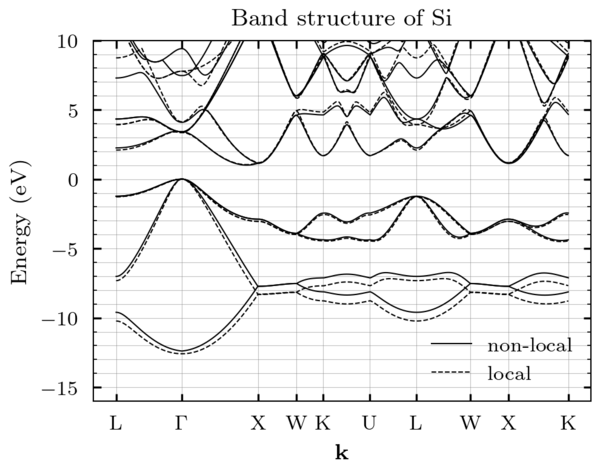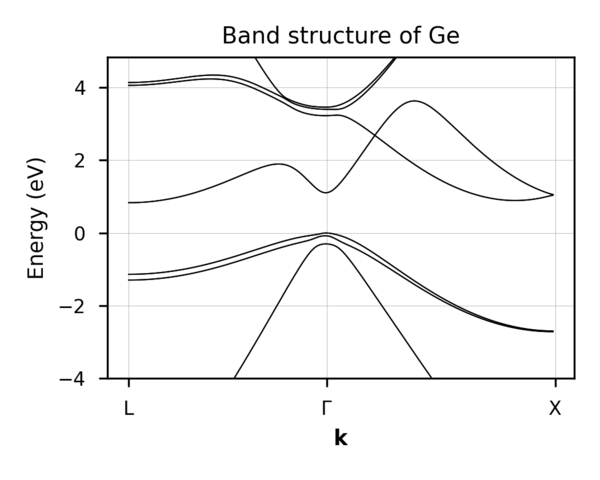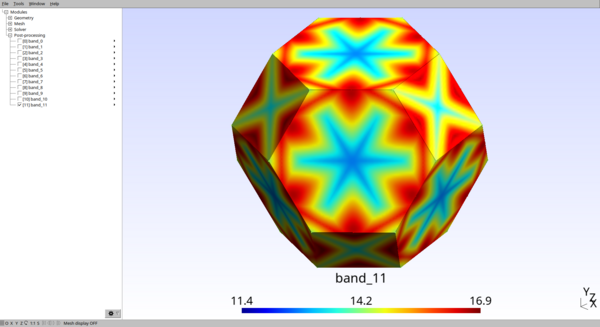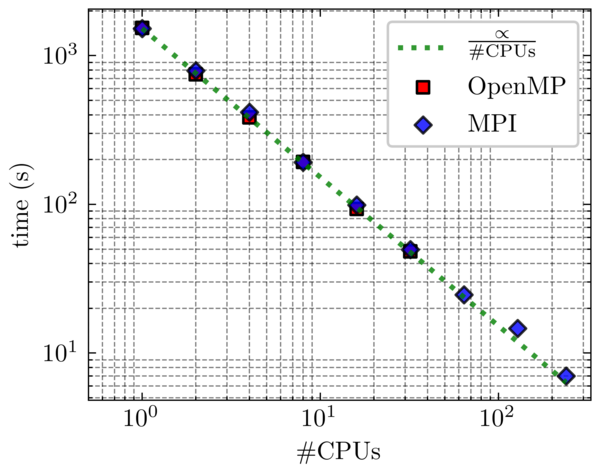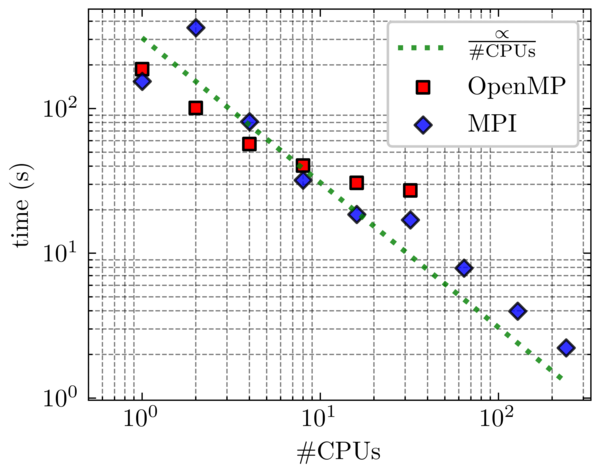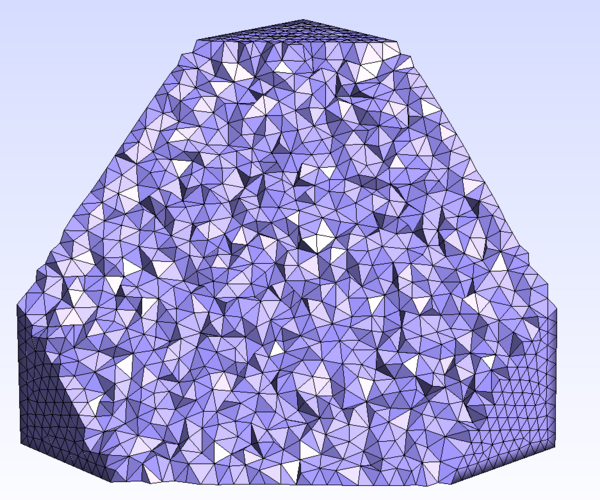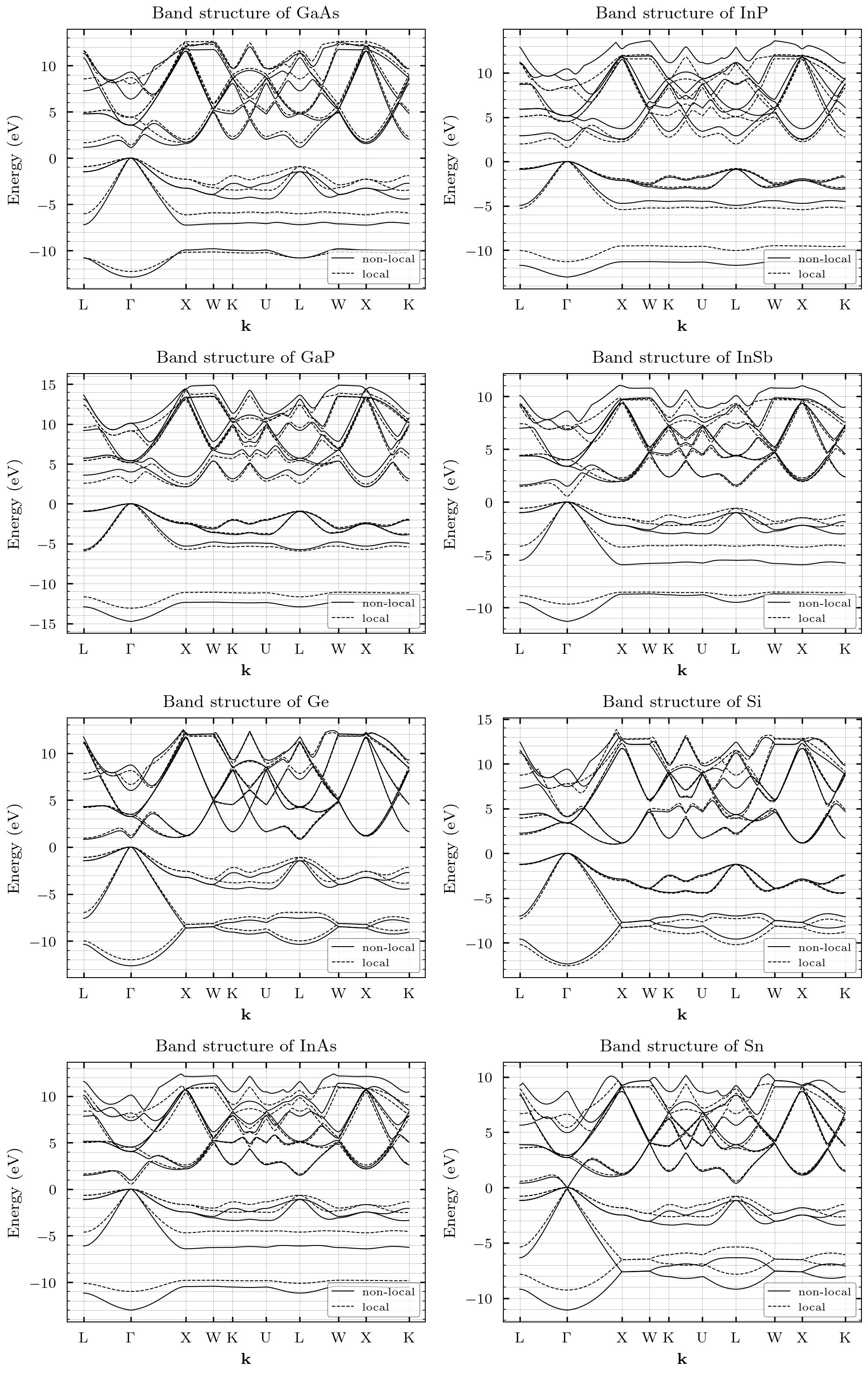Band structure and DOS computation using empirical pseudopotentials on the full Brillouin-Zone. It includes the following features:
- Standard EPM over high symmetry k-points in the Brillouin zone.
- Calculation of the band structure and DOS on a mesh of k-points in the Brillouin zone.
- Nonlocal corrections to the EPM.
- Spin-orbit coupling (SOC) for the EPM band structure.
- MPI and OpenMP parallelization.
This repository was initially a fork from : EmpiricalPseudopotential of Adrian Roman.
You can do four types of calculations:
- Band structure over a path of high-symmetry points in the Brillouin zone.
- Band structure over all k-points of an input mesh of the Brillouin Zone (or a fraction of it).
- Density of states over the all Brillouin Zone.
- Dielectric function computation (q-dependent).
Compute the electronic band structure over a path of high-symmetry points (e.g.
The SOC can be included in the computation:
Compute the electronic band structure over all k-points of an input mesh of the Brillouin Zone (or a fraction of it). The result can then be visualized, for example, through iso-energy surface.

Compute the density of states over the all Brillouin Zone.
![]()
![]()
Dielectric function computation (q-dependent)


This project relies on these libraries:
You will also need standard packages such as CMake, Make, a C++ compiler, etc.
A minimal installation command would look like:
sudo apt-get update && sudo apt-get install -y apt-utils cmake g++ libopenmpi-dev
If you don't have Eigen install on your system, the sources will be automatically fetched by CMake when you'll compile the project. You don't need to do anything. Eigen Website.
The tclap library is headers-only and embedded in the sources of the project. You do not need to install it.
You can install GMSH from sources straightforwardly :
Go wherever you want to install the library and run:
git clone https://gitlab.onelab.info/gmsh/gmsh.git && cd gmsh && mkdir build && cd build && cmake -DCMAKE_BUILD_TYPE=Release -DENABLE_BUILD_SHARED=1 -DENABLE_PRIVATE_API=1 .. && make -j 8 shared && make install/fast && cd .. && rm -rf gmsh
Find more informations on GMSH Website.
git clone https://github.com/RemiHelleboid/EmpiricalPseudopotential.gitcd EmpiricalPseudopotentialmkdir build && cd buildcmake ..make
To plot the band structure over a path
./apps/EmpiricalPseudoPotentialMain -m Si -b 16 -N 2000 -n 10 -r output_dir -j 4 -p LGXWKULWXKG -C -P
- The
-m Sisets the material on which the band structure is computed to Silicon. - The
-b 16option means to compute and export 16 bands. - The
-N 2000option means that the path will be discretized in 2000 points. - The
-n 10option specifies the number of nearest neighbors used to compute the band structure. - The
-Coption means that the nonlocal corrections are used. - The
-r output_dirmeans that the results of the computation will be stored in the output_dir directory (it is created if it does not exist yet). - The
-j 4option requires the computation to be run with parallelization on 4 CPUs. - The
-p LGXWKULWXKGoption specifies the path on which the band structure must be computed. G stands for$\Gamma$ . - The -P option will trigger a call to a python script that will plot the calculated band structure after it has been computed.
Additional possibilities
- If you don't specify the material with the
-m SymBoloption, the computation will be done for all the available materials. - If you want to get all material on many different paths, use the
-Aoption, and don't specify either material or path. - Use
./apps/EmpiricalPseudoPotentialMain --helptodisplay the helpof the program.
Outputs
- The energies at each point in the path, for each band, is stored in a file with the form
EEP_Si_nb_bands_16_path_LGXWKULWXKG_size_basis_137.txt. - If the
-Poption was set, the plot of the band structured is also stored as .png and .pdf files.
To compute the electronic band structure over a mesh of the Brillouin zone, the command is:
./apps/BandsOnBZ -f bz_mesh.msh -m Si -b 12 -n 10 -C -j 8 -o output_file
- The
-m Sisets the material on which the band structure is computed to Silicon. - The
-Coption means that the nonlocal corrections are used. - The
-b 12option means to compute and export 16 bands. - The
-j 8option requires the computation to be run with parallelization on 8 CPUs. (OpenMP) -o output_filecan be used to set the name of the output file.
MPI
This program has an MPI version, for the same arguments as previously, the command is:
mpirun -np 8 ./apps/mpiBandsOnBZ -f bz_mesh.msh -m Si -b 12 -n 10 -o output_file
- The parallelization is performed over the k-points of the BZ mesh.
Output
- The result of the computation, i.e. the energy of each band at each vertex of the input mesh, is stored as follows: for each band the energies are store as a gmsh "view" which is the name for the physical data (scalar, vector field, tensor, ...) in the mesh.
The command to compute the Density of State is:
./apps/DOS_MeshBZ -f input_mesh_with_bands.msh -m Si -b 12 -e 500 -j 8 -P
- The
-f input_mesh_with_bands.mshthe mesh file with the energy bands computed, resulting from the computation withBandsOnBZprogram. - The
-m Sisets the material on which the band structure is computed to Germanium. - The
-b 12the number of bands to consider, here: 16 bands. - The
-e 500option sets the number of energies with whom the energy range of each band is discretized. - The
-j 8option requires the computation to be run with parallelization on 8 CPUs. - The -P option will trigger a call to a python script that will plot the density of states after it has been computed.
-o output_filecan be used to set the name of the output file.
MPI
This program has an MPI version, for the same arguments as previously, the command is:
mpirun -np 8 ./apps/mpiDOS_MeshBZ -f input_mesh_with_bands.msh -m Si -b 12 -e 500 -P
- The parallelization is performed over the bands and the energies.
This section reports some performances of the code. We show comparison between parallelization with OpenMP and MPI. The numbers are shown only as a rough estimation, and one should not rely to much on the accuracy here.
Band structure computation of Silicon for 16 bands, on a full BZ mesh of around 300K points with local EPM.
For band structure code, the parallelization is done over the k-points. Computation for every k-points is completely independent from the others, which leads to a very good scaling, as the above image shows. MPI enables to reach higher number of cores, so that the total computation time falls under one minute.
To get the required mesh of the Brillouin Zone, you can use the BZ.py script from the great J. Grebot, there: fcc-bz-mesh.
If you have data for materials that are not yet available in the code, feel free to contact us, we would be glad to add it.
| Material | Local | Nonlocal |
|---|---|---|
| Si | Yes | Yes |
| Ge | Yes | Yes |
| GaP | Yes | Yes |
| GaAs | Yes | Yes |
| AlSb | Yes | No |
| InP | Yes | Yes |
| InAs | Yes | Yes |
| InSb | Yes | Yes |
| AlAs | Yes | No |
| ZnSe | No | Yes |
| CdTe | No | Yes |
- Cohen, M. L. & Bergstresser, T. K. Band Structures and Pseudopotential Form Factors for Fourteen Semiconductors of the Diamond and Zinc-blende Structures. Phys. Rev. 141, 789–796 (1966).
- Chelikowsky, J. R. & Cohen, M. L. Nonlocal pseudopotential calculations for the electronic structure of eleven diamond and zinc-blende semiconductors. Phys. Rev. B 14, 556–582 (1976).
- Pötz, W. & Vogl, P. Theory of optical-phonon deformation potentials in tetrahedral semiconductors. Phys. Rev. B 24, 2025–2037 (1981).
- Adrian Roman for the initial version of the code.
- Jeremy Grebot for the BZ meshing script.
- Marco Pala and Alessandro Pilotto: support for the non-local corrections.
